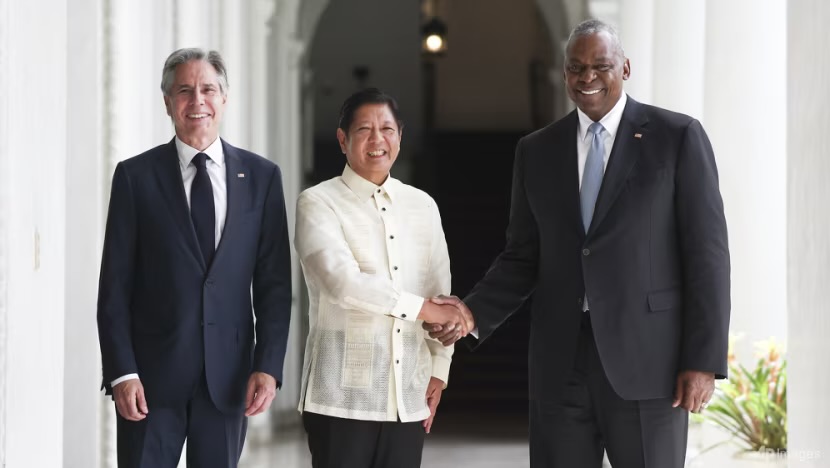Philippine President Ferdinand Marcos Jr. recently met with U.S. Secretary of State Antony Blinken and Defence Secretary Lloyd Austin. The meetings took place at Malacanang Palace. Marcos emphasised the need for regular communication between Manila and Washington. He wants these discussions to help both nations respond quickly to maritime tensions with China.
Marcos Improving Relations
Relations between the U.S. and the Philippines have improved under Marcos. His predecessor, Rodrigo Duterte, had strained relations with Washington. Duterte favoured closer relations with China, causing friction with the U.S. Marcos has shifted the focus back to strengthening the alliance with America.
Strategic Meetings
Marcos welcomed Blinken and Austin for the first time at these high-level meetings. He highlighted the importance of keeping communication lines open. According to Marcos, this helps both countries stay agile and respond effectively to issues in the West Philippine Sea and the Indo-Pacific region.
Maritime Tensions
China and Philippines have opposing claims to the South China Sea. China asserts control over 90% of this sea. Tensions have escalated, leading to violent incidents. Recently, a Filipino sailor lost a finger after a clash with the Chinese coast guard. Manila described the incident as an “intentional high-speed ramming.”
Provisional Arrangement with China
The Philippines and China managed to come to a “provisional arrangement” in spite of the tensions. This deal aims to ease disputes and manage differences. However, the details of this arrangement remain unclear and have not been made public.
U.S. Support and Commitments
Blinken and Austin reaffirmed American commitment to respecting international law in South China Sea during their visit. They emphasized the strong support provided to the Philippines under the Mutual Defence Treaty. This treaty assures that the U.S. will support the Philippines in case of any attacks.
Countering China
The meetings in Manila followed discussions between Blinken, Austin, and their counterparts in Japan. These talks included an upgrade of U.S. military command in Japan. China was identified as the “greatest strategic challenge” in East Asia.
Quad and International Criticism
Blinken also met with foreign ministers from Australia, India, and Japan, known as the Quad. They criticized China’s actions in the South China Sea. In response, China accused the U.S. and its allies of creating unnecessary tensions and trying to contain China’s development.
U.S. Military Aid
The U.S. is set to announce $500 million in military aid for the Philippines. This is part of a larger $2 billion aid package for Indo-Pacific countries confronting Chinese aggression. The Pentagon also proposed spending $128 million to improve infrastructure at Philippine bases accessible to U.S. forces.
Enhanced Defense Cooperation
There are now nine sites under the Enhanced Defense Cooperation Agreement (EDCA). This agreement allows U.S. forces access to Philippine bases. The Philippines agreed last year to add four new sites, including three in the north and one near the South China Sea. These sites are crucial for potential conflicts, such as a possible invasion of Taiwan by China.
Ongoing Negotiations
Another agreement for the general security of military information is being worked on by the United States and the Philippines. This deal would enhance intelligence sharing between the two countries. Although both sides aimed to complete it by the end of 2023, they have not yet finalized the agreement.
Way Forward
President Ferdinand Marcos Jr. has stressed the importance of regular U.S.-Philippines meetings to address maritime tensions with China. Improved relations with the U.S. are part of his strategy to strengthen national security. The Philippines and the U.S. are also working on significant military aid and agreements to enhance their defense cooperation.

